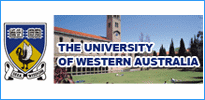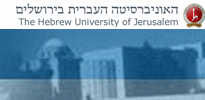Albania: Albania Education Profile
2015/09/01
Education System in Albania
At the time Albania gained its independence in 1912, the only educated persons were those who had attended foreign-language schools. Even after the establishment of an Albanian school system, facilities were limited. At the outbreak of World War II, 85 % of the people was illiterate.
After the war, with Soviet assistance, a great effort was made to provide basic education for amount children, and by the 1980's illiteracy had been reduced to about 25 %. Schooling is compulsory from age 7 to 15. Secondary schools are of three types: general education; technical-professional, which combine vocational training with a general education; and lower vocational, which provide training in agriculture and industry. The country's first university was established in Tiranë in 1957. Since then, three other universities have been founded.
literacy rate in Albania for the total people, age 9 or older, is about 93%. Elementary education is compulsory (grades 1-8), but most students continue at least until a secondary education. Students must successfully pass graduation exams at the end of the 8th grade and at the end of the 12th grade in order to continue their education.
Grading System in Albania

Most schools are public and financed through the government, but recently several private schools of various levels have been opened. There are about 5000 schools throughout the country. The academic year is divided into semesters. The school week begins on Monday and ends on Friday. The school year begins in September and finishes around June. There is a winter break of about to three weeks.
• Preschool education (çerdhe or kopësht): 1-4 years
• Primary education (9-vjeçare): 9 years (It was 8 years before 2005)
• Secondary education:
o Regular (e mesme or gjimnaz): 3 years
o Vocational or Technical (teknike): 2-5 years
• Tertiary education:
o Undergraduate (e larte): 4-5 years
o Graduate: 1-3 years
• Quaternary education (doktoratë): 3 years
Basic characteristics of the Albanian education in the last years are:
• Increase of the number of pupils registered in Professional and Technical High Schools and profiling of Public High Schools in three directions after some years of successful testing:
- Increase of new arrivals in Universities in response to the enormous requests of the students finishing the high schools.
- Improvement of schools and curricula
- Opening for the first time of a private University.
Schools in our country are mainly public, but a lot of private schools have started their activity mainly in the bigger towns of the country. A number always growing successfully follow the schools and universities abroad and a lot of of them after finishing their education wanted approaching back in Albania .
Secondary education
General secondary education includes a mandatory eight-year course. The secondary infrastructure is composed of 308 schools and about 112,800 students (14 % parttime). General secondary education attracts additional and additional students from primary education (about 57 % of the pupils who finish primary school in 2003,compared with 45.8% in 19915).
Attendance rates are high for primary education, as are the rates of transition to secondary education. The dropout rates from secondary schools are very high. During the academic year 2003-2004 the NER was only 43 % for secondary education, with variations depending on the geographical context (urban- rural) additional than gender. The NER is 45% for males and 42% for females. For children from rural and proto-urban regions there is a lower attendance rate in general secondary education, principally because of the limited availability of schools in these regions.
The geographical disparities in the NER are sharp: 75% in urban areas and 22% in the rural areas for academic year 2002-2003. In rural areas these modest coefficients indicate early entryinto the labour market on the part of children responding to the economic needs of the household. Most work by young people in these circumstances is done on the family farm or at jobs in the city, hence the opportunity cost of pursuing education. Those leaving school early, are growing in number even in the context of the expansion of secondary education.
Part-time education or other options to increase’s level of educational attainment while still contributing to the household economy are scarce.
Albania Credentials
Vocational education
After 1990 the Albanian system of vocational education was abandoned in favour of general secondary schools. The ratio of students undergoing vocational training versus the total in secondary education was much lower in 2003-2004 than in 1990, indicating a dramatic change in the educational system. Before 1990, vocational schools (VET) provided agricultural and industrial training, and 70% of the students attended those schools. Most were subsequently closed, and today VET does not play an significant role in the context of secondary education. The situation has furthermore been exacerbated by the failure of vocational training in the regions. Not only has the national withdrawn from financing such an expensive network of schools, but young people themselves are showing additional interest in general education as way to build opportunities in various types of postsecondary or higher education. In short, the specific nature of vocational training is lagging far behind young people’s aspirations. The number of vocational schools in 2003-2004 was only 53 (a mere 4 of which were located in rural areas) compared with 454 schools in 1989. Pupils in vocational education represented about 16 % of children registered in secondary education in 2004 (21,900 students). Females composed only 19.5 % of the student people during that year, with interests mainly focused on social and cultural sciences.
Vocational schools are a male domain, enhancing their professional orientation toward technical positions. However, the type of qualifications inclunding the specific knowledge/skills that young people acquire in the educational system often do not fit the labour market demands. Albania's market reforms did not create efficient links between schools and enterprises. Agricultural fields have not received as much emphasis as during the period before 1990, while the majority popular fields are engineering, manufacturing and construction, followed by education and then humanities, sciences and arts .
The centrally planned economy’s historical emphasis on industry and agriculture at the expense of services had major implications for the education system. Examples still exist of narrow vocational training for employment in industries for which request has now collapsed. Broad reform is envisioned during the next few years that will increase the autonomy of these schools and enable them to meet the needs of the economy. The government is increasing the capacities of vocational schools by introducing other specialties aiming to increase enrolment by 30%.
Universities in Albania
This list includes universities, colleges, vocational schools, and other higher education institutions.
- Albania News
-
- AFGHANISTAN: UNWTO: International tourism – strongest half-year results since 2010
- ALBANIA: US LNG exports make European market more competitive
- ALBANIA: European Union to support Albania's public administration reform
- ALBANIA: European Union to support Albania's public administration reform
- AFGHANISTAN: Higher earning Why a university degree is worth more in some countries than others
- ALBANIA: Albanian Activists Mull Lawsuits to Stop Power Plants
- Trending Articles
-
- SOUTH AFRICA: Nigeria and South Africa emerge from recession
- BAHRAIN: Bahrain issues new rules to encourage fintech growth
- UZBEKISTAN: Former deputy PM named Uzbekistan Airways head
- ARUBA: Director of Tourism Turks and Caicos after Irma: Tourism, visitors, hotels current status
- ANGOLA: Angola: Elections / 2017 - Provisional Data Point Out Qualified Majority for MPLA
- WORLD: How fair is our food? Big companies take reins on sourcing schemes
















